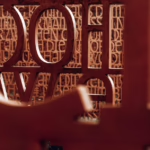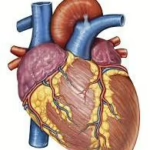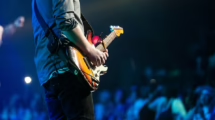The Art of Numbers: Exploring the Beauty and Elegance of Mathematical Patterns
Mathematics often conjures images of stark equations, abstract theories, and the rigid confines of numbers on a page. However, beneath this seemingly austere surface lies a world bursting with beauty and elegance. The art of numbers transcends mere calculations; it weaves a tapestry of patterns, symmetries, and relationships that resonate with creative minds. This article embarks on a journey through the captivating realm of mathematical patterns, revealing the intrinsic artistry that mathematics embodies.
The Fibonacci Sequence: Nature’s Golden Ratio
One of the most celebrated mathematical sequences is the Fibonacci sequence, where each number is the sum of the two preceding ones: 0, 1, 1, 2, 3, 5, 8, 13, and so forth. This sequence finds its way into nature in remarkable ways—the arrangement of leaves on a stem, the pattern of seeds in a sunflower, and the spirals of shells all embody Fibonacci’s influence.
The allure of the Fibonacci sequence extends into the realm of art as well. The Golden Ratio, approximately 1.618, is derived from this sequence and is often employed in art and architecture to create visually appealing compositions. Famous painters like Leonardo da Vinci and Salvador Dalí utilized this ratio to structure their masterpieces, crafting works that resonate with harmonious proportions.
Fractals: Infinite Complexity in Finite Space
Fractals represent another thrilling manifestation of mathematical beauty. Defined by their self-similar patterns, fractals reveal intricate detail at every scale. The Mandelbrot set, one of the most well-known fractals, presents a boundary that is infinitely complex and yet governed by simple mathematical rules. Fractals can be seen in natural phenomena, such as coastlines, clouds, and even the branching of trees.
Artists and architects have embraced fractal geometry, using it to inspire intricate designs that reflect the natural world. The dynamic interplay of mathematics and creativity encourages a fresh perspective on both disciplines, demonstrating how abstract concepts can generate profound beauty.
Symmetry: The Balance of Form
Symmetry has captivated humans since ancient times, representing balance, order, and aesthetic beauty. In mathematics, symmetry relates to invariance under certain transformations, such as reflection, rotation, or translation. This concept is evident in various artistic expressions, from Islamic mosaics to the architecture of cathedrals.
Mathematical symmetry finds its voice in group theory, which studies symmetrical structures. The elegance of symmetry can be found in patterns of attractors in dynamical systems, the periodic table of elements, and even the very arrangement of molecules. By understanding the role of symmetry in mathematics, artists can evoke feelings of harmony and balance in their creations.
Patterns in Music: The Mathematical Composition of Sound
Music, often described as a universal language, is deeply intertwined with mathematics. The relationships between musical notes follow mathematical ratios, creating harmony and dissonance that echo mathematical patterns. For instance, the octave is achieved when the frequency of one note is double that of another, while the perfect fifth is established at a frequency ratio of 3:2.
Notable composers like Johann Sebastian Bach and Leonard Bernstein have used mathematical principles to compose music that captivates audiences through its structural coherence and emotional depth. The use of patterns and sequences in music composition exemplifies how numbers underpin artistic expression.
The Intersection of Art and Science: Mathematical Visualization
The fusion of mathematics and art extends into the realm of visualization, where concepts become stunning visual representations. Mathematical models can be translated into artistic works that communicate complex ideas clearly and beautifully. Programs like Mathematica and software like MATLAB empower mathematicians and artists to create breathtaking visualizations of mathematical concepts, ranging from geometric curves to three-dimensional constructs.
The production of mathematical sculptures is another compelling avenue where creativity flourishes. Artists like Bathsheba Grossman craft stunning three-dimensional forms based on complex mathematical equations, bringing abstract ideas to life in visually striking ways.
Conclusion: Celebrating the Artistic Essence of Mathematics
The intersection of mathematics and art reveals a rich tapestry of beauty, elegance, and creativity. As we explore the Fibonacci sequence, fractals, symmetry, musical patterns, and mathematical visualizations, we uncover a profound connection between numbers and artistic expression.
Mathematics is not just a tool for calculations; it is a profound language that describes the beauty of the universe. Embracing this artistic essence fosters a greater appreciation for the elegance of mathematical patterns, inspiring us to see the world through an artistic lens enriched by numbers. In the end, the true art of numbers lies not only in their utility but in their ability to evoke wonder and provoke thought, bridging the gap between rational reasoning and creative exploration.
For further exploration into this fascinating relationship, please refer to the source cited in the modern footnote: [modern_footnote_source_link].


























Add Comment